Making the right decision at the right time is hard. It's a struggle business leaders know well.
A broken decision-making process, the wrong strategic tools, and no visibility into the company's portfolio performance can lead to failed strategies and large organizations going out of business.
But the ability to recognize growth opportunities and cut dead-end strategies in time has always been a competitive advantage. And GE Matrix - also known as GE McKinsey Matrix - is one of the strategic tools that can help you in the process.
In this article, we will cover everything you need to know about this framework, including HOW to use it, and WHEN you should use it.
⚠️ Go beyond the matrix! While it helps prioritize investments, the GE Matrix shouldn't be the final stop. Cascade Strategy Execution Platform bridges the gap between portfolio analysis and action. Talk to a strategy expert and translate your GE Matrix insights into a strategic plan with clear ownership and measurable results.
.avif)
What Is The GE Matrix?
The GE McKinsey Matrix is a strategic framework that helps multi-business corporations manage portfolios and prioritize investments across products and SBUs (Strategic Business Units).
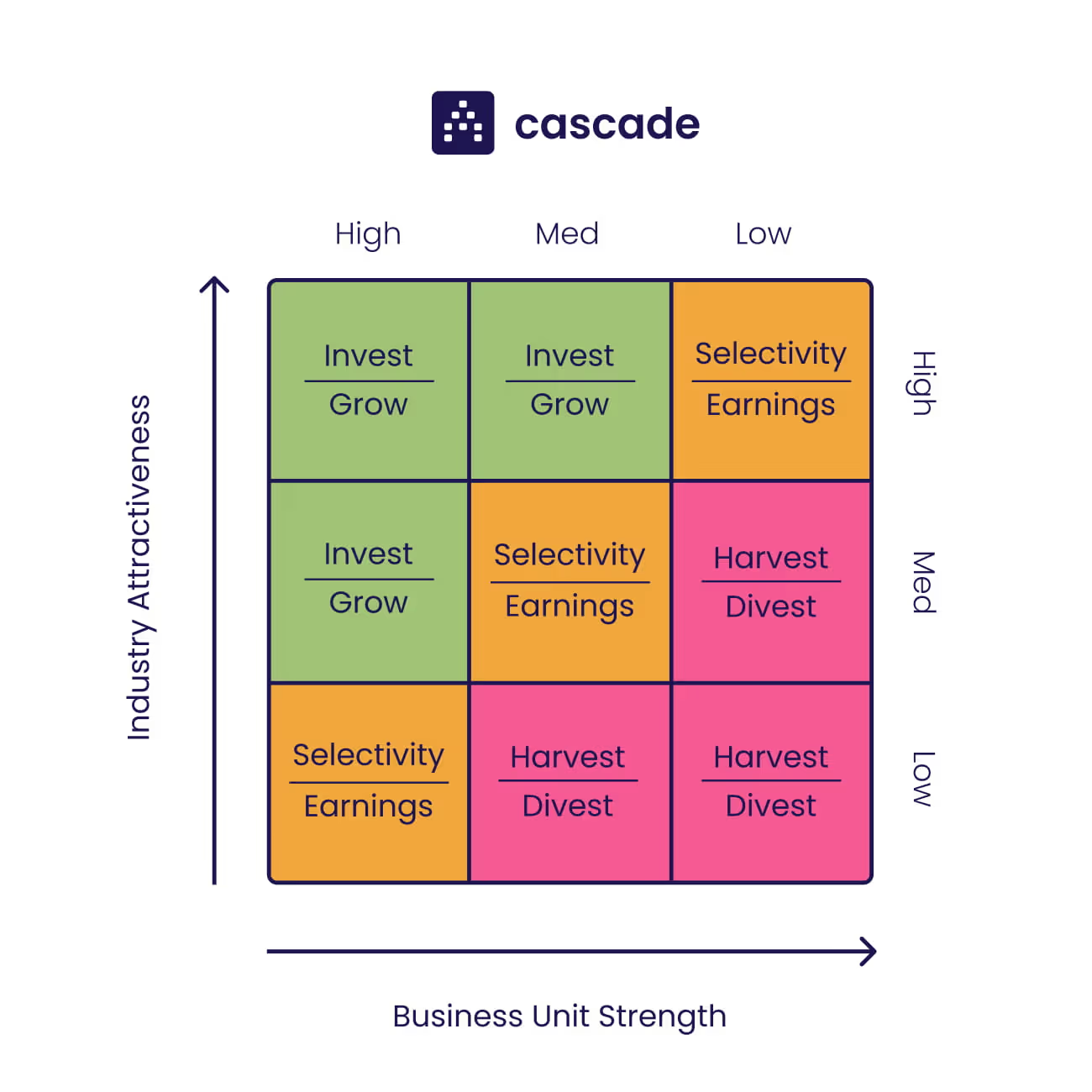
The GE Matrix looks at two factors: the competitive strength of an SBU and the attractiveness of the market in which it operates.
Based on where the SBU sits within the 3x3 GE Matrix, portfolio managers can quickly answer three strategic questions:
- How to allocate capital throughout the organization's portfolio of companies?
- What products or additional strategic business units are needed in their portfolio?
- Which strategic business units should be divested?
🎥 Prefer watching over reading? Check out our video on the GE Matrix for a concise visual breakdown of this powerful framework:
The Components Of The GE McKinsey Nine Box Matrix
Let's look at the components of the GE McKinsey Matrix to make sense of the results.
Y-Axis
The vertical axis scores the industry attractiveness (either low, medium, or high) of SBUs. A higher score on this axis will place an SBU higher in the GE Matrix.
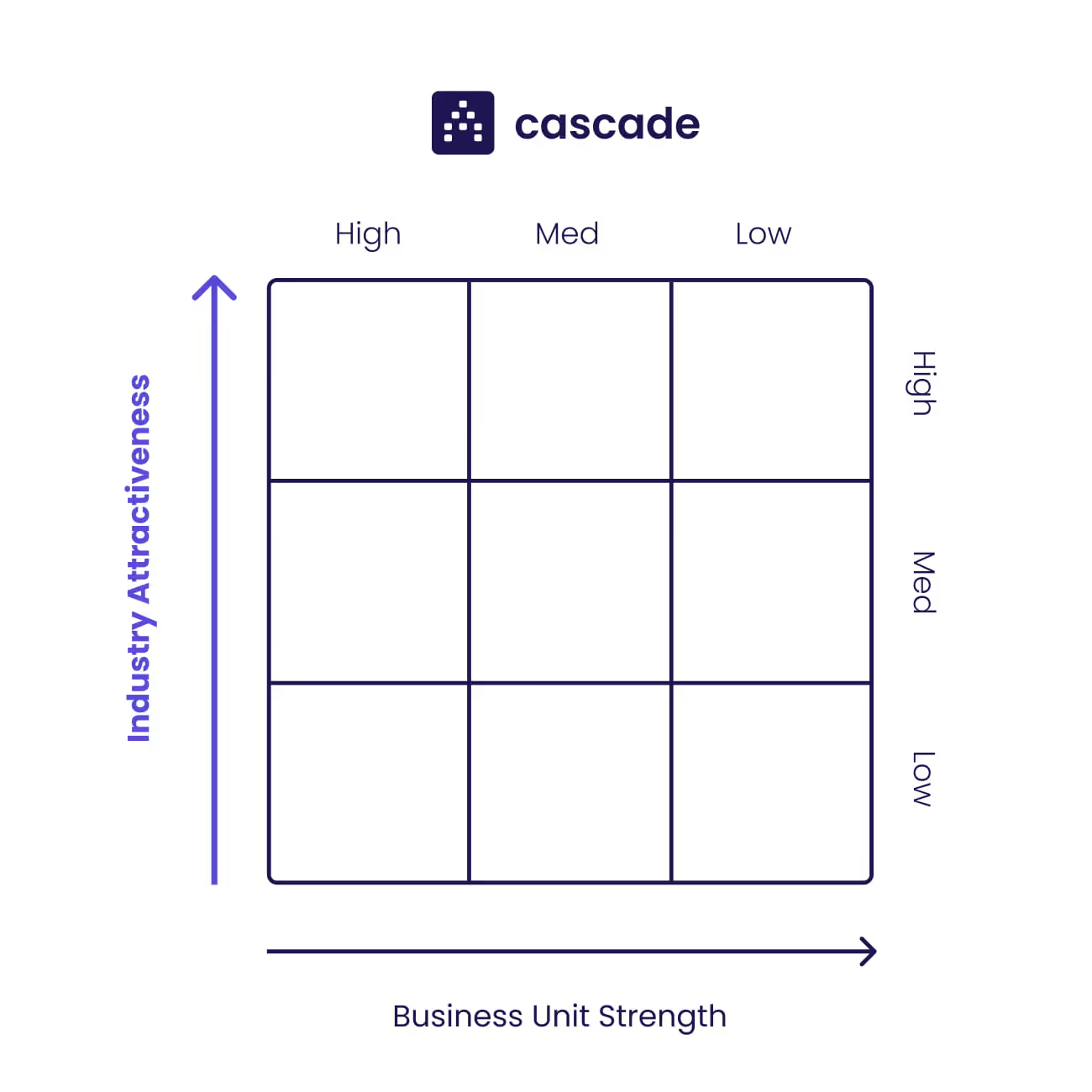
X-Axis
The horizontal axis indicates the SBU's strength as either low, medium, or high. It moves from right to left, but it goes from high to low.

Invest/Grow (Green)
SBUs in these blocks have a mixture of solid business performance and an attractive industry. They are primed for growth and should be allocated resources and capital.

Selectivity/Earnings (Orange)
SBUs that fall within these blocks aren't performing optimally or operate in an unattractive industry. These business units require a more conservative approach to either growth or divestment strategies.
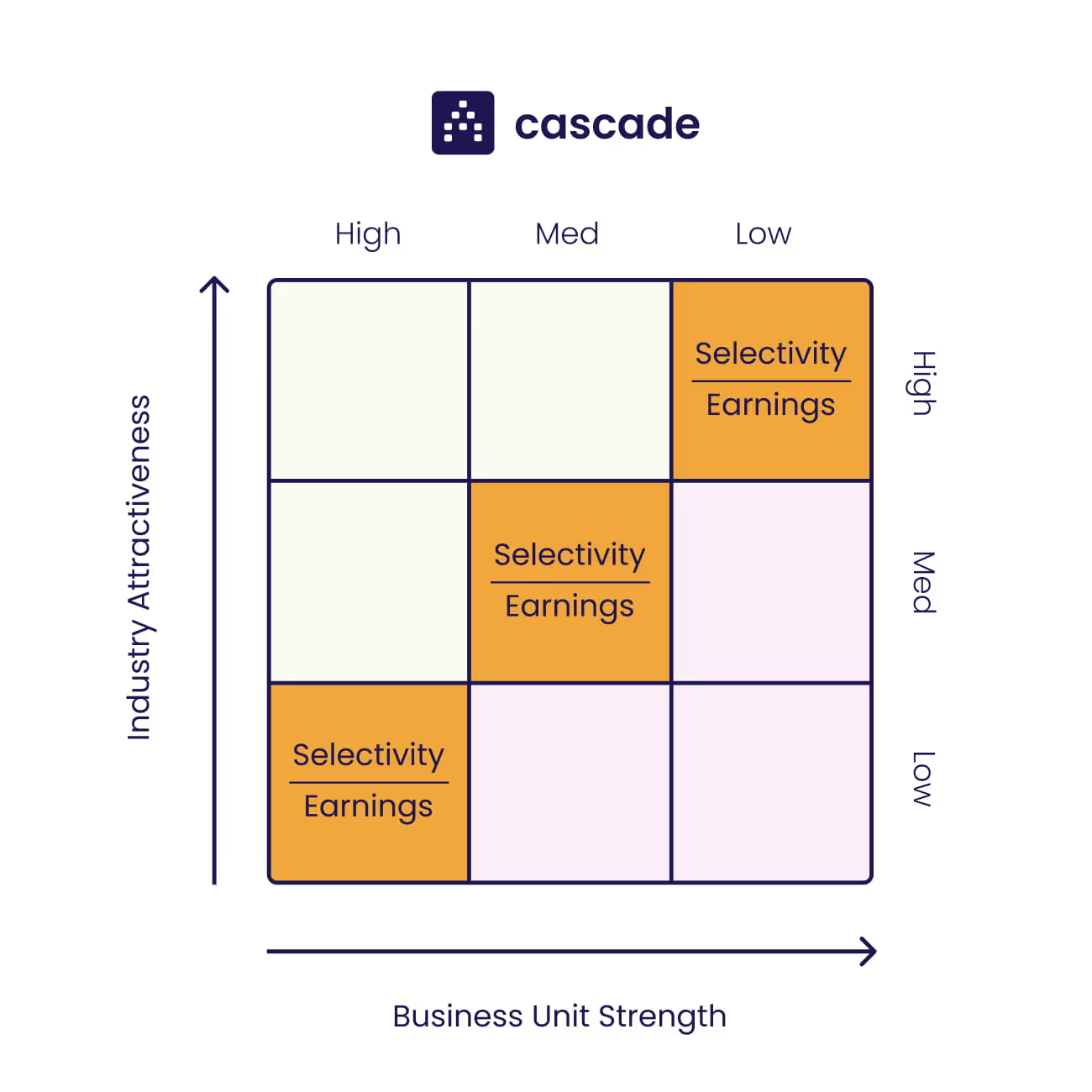
Harvest/Divest (Red)
If a business unit is mapped in the red blocks, this indicates that a divestment/harvest strategy should be taken. Generally, this means that a business should be closed, further investment should be withheld, or the company should be run for cash.

How To Use GE Matrix?
1. Determine the industry attractiveness of each SBU
Calculate the market attractiveness in which each SBU operates. Remember, this is a subjective estimate based on your understanding of the business unit industry or sector.
Score the SBUs industry attractiveness by looking at factors like:
- Market size
- Industry profitability
- Market growth potential
- Industry segmentation
- Market profitability
- Differentiation
- Market growth rate
- Level of competition
Important note: The scale you use to score SBU strength and industry attractiveness will depend on your needs. Most businesses use a 1-10 scorecard, but you may want to use a different range when assigning values.
2. Determine the competitive strength of your strategic business units
You'll then repeat this process for each company in your portfolio. Look at the strength of the business unit and its competitive position in the market.
Factors you can consider when working out the strength of a business unit:
- Sustainable competitive advantages (use VRIO analysis)
- Brand equity
- Customer loyalty
- Market share
- Internal competencies
- Strength of the value chain (use value chain analysis)
- Production capacity
- Product lines
- Pricing and cash flows
- Profit margin compared to competitors
Important note: Different factors have different levels of importance. When calculating industry attractiveness and business strength scores, you'll need to weigh numerous factors to reflect this.
3. Plot the information on the GE McKinsey Matrix
Next, plot the values for each strategic business unit on your Matrix. Use the market attractiveness score to plot your Y-axis position and the business strength score to plot your X-axis position.
The location of each SBU on the 3x3 chart will indicate whether the company should grow, hold, or harvest specific business units.
4. Identify the future direction of each strategic business unit
The GE Matrix only provides a view of the current state of business units in a portfolio and doesn't account for other variables that may impact a business's viability.
This means that teams that use the GE Matrix must analyze business units in more detail to understand all strategic implications.
Using different strategic analysis tools, such as SWOT analysis, Porter's 5 Forces, or PESTEL analysis, could help you analyze internal and external environmental factors. This will also help you to identify potential risks in the future.
5. Choose where to invest and focus your attention
Once you have a picture of your portfolio mapped out on the GE Matrix, you'll still need to answer some critical questions before making decisions about SBUs.
For example, how much money should you put into a specific business unit? Does investing in these SBUs align with your long-term strategy? Which parts of a particular business unit should you invest in?
As Michael Porter, the father of the modern business strategy, says, “The essence of strategy is choosing what not to do”.
At this point, you should clearly understand what your organization will focus on. This will help your organization to stay on the right track and prevent wasting resources on misaligned efforts.
6. Turn insights into results
With a clear idea of direction and new priorities, you should take those insights and turn them into an actionable strategic plan.
A strategy execution platform like Cascade can streamline the process of communicating new goals, strategizing, and executing strategic initiatives. It can also help your organization ensure performance and align your portfolio strategy with the company's high-level strategy.
3 Examples Of GE Matrix And Its Possible Strategic Scenarios
GE Matrix Example (Harvest Strategy): Microsoft Internet Explorer
At one point, Microsoft Internet Explorer, was the dominant internet browser in the market. In 2003, more than 95% of all internet users were using it to surf the web. Here's how the GE McKinsey Matrix might look for the Internet Explorer SBU over time.
The 2003 Microsoft Internet Explorer was:
1. A strong business unit
2. In an attractive industry
It would have been somewhere in the top left corner of a GE McKinsey Nine Box.

However, more web browsers started to appear, and the industry became more competitive. By 2010, Microsoft had lost 35% of its web browser market share to other competitors such as Firefox, Chrome, and Safari.
After 2010, the Internet Explorer SBU likely scored lower in competitive strength and market attractiveness compared to its earlier days.

Based on these significant changes, Microsoft likely decided that the Internet Explorer business unit would need to be closed, run for cash, or selectively harvested.
And that's the strategy the company followed over the next 12 years.
- In 2013, Microsoft released the last version of Internet Explorer (IE 11).
- In 2015, they launched a new web browser, Microsoft Edge.
- In 2022, they ended support and retired the program.
GE Matrix Example (Hold Strategy): David Jones
In 2014, Woolworths Holding Ltd., a prominent South African retail chain, acquired Australian retailer David Jones, believing it could generate A$130 million per annum in earnings within five years.
According to Woolworths Holding Ltd., David Jones had:
- A strong business unit with a 176-year history in Australia
- High industry attractiveness and a strong position in the retail market.
Here's an example of how David Jones' GE Matrix might have looked between 2014 and 2021:
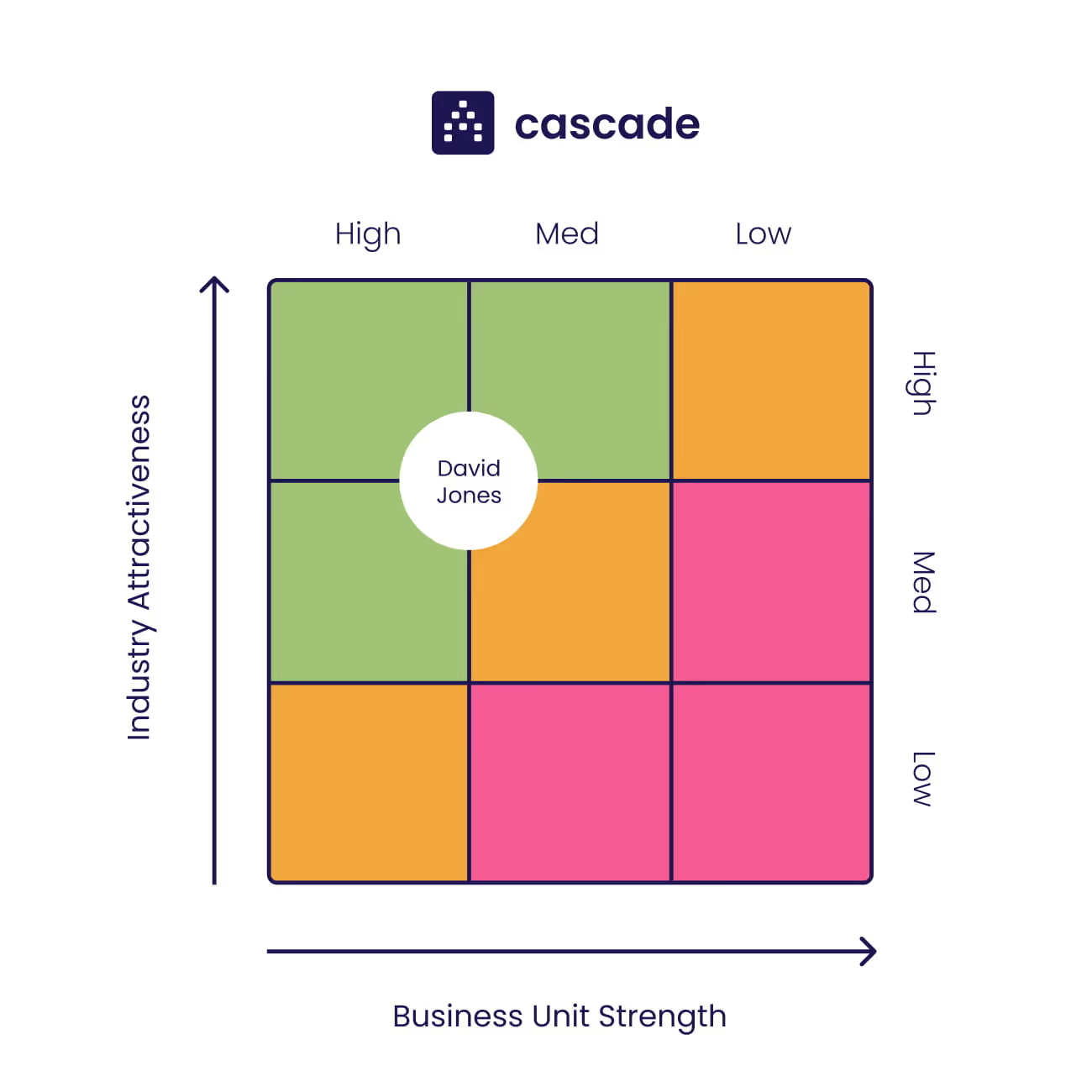
However, the David Jones brand underperformed, and original plans to expand operations stagnated. Here's how its position might have looked in 2015.
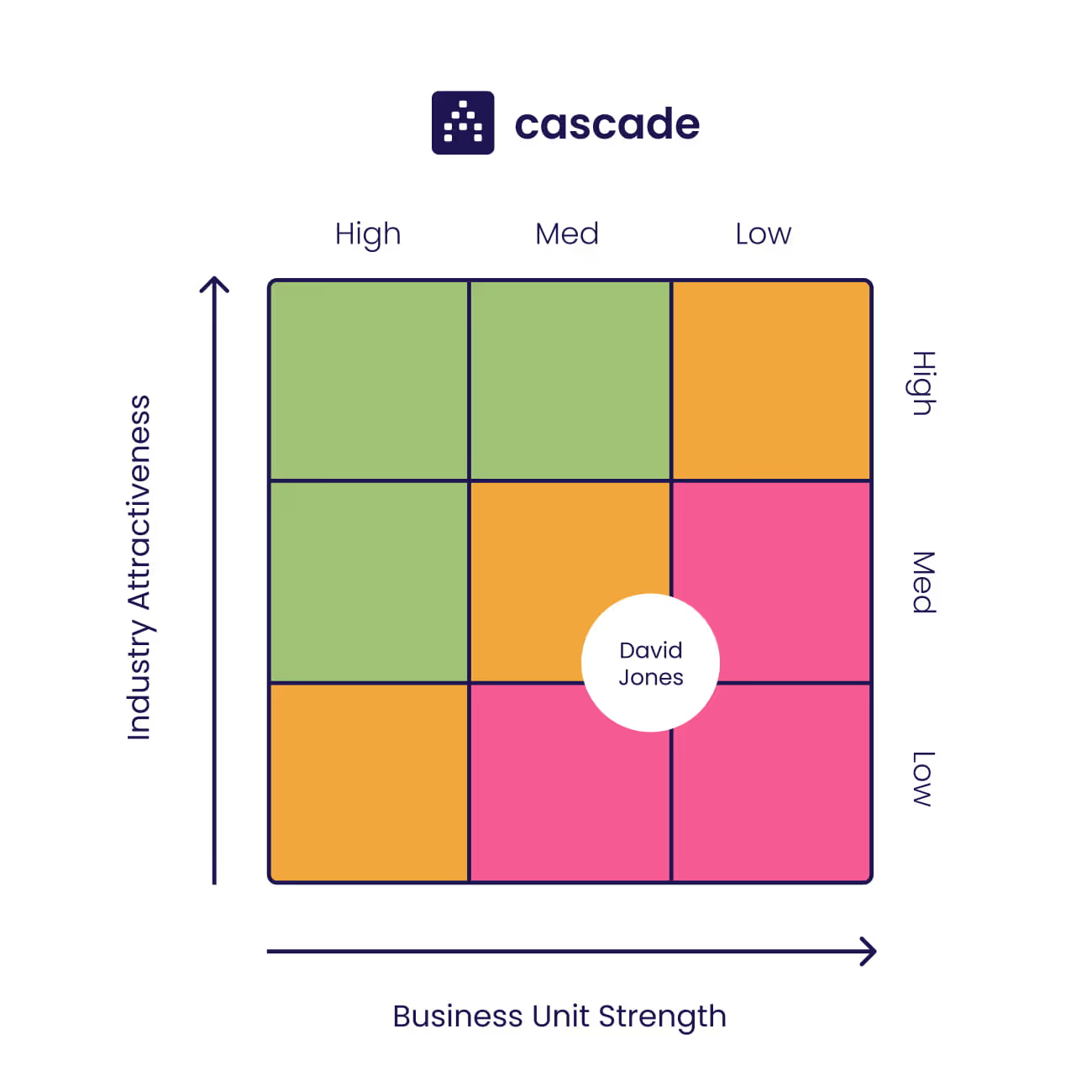
Woolworths Holding Ltd. likely decided to take a selective harvest/grow approach in response to the changing Australian retail market. This strategy is evident in some of their significant decisions between 2015 and 2022.
In 2015, David Jones implemented several cost-cutting measures, such as restructuring the organization, cutting floor space in all stores, reducing product ranges, and firing top IT executives.
One year later, in 2016, they shifted their head office from Sydney to Melbourne, citing lower real estate costs as one of the factors.
By 2020, David Jones closed 48 stores; and in 2021, they sold two properties worth A$620M to free up capital.
GE Matrix Example (Grow Strategy): Netflix
Nowadays, Netflix, the online streaming company that revolutionized the entertainment industry, is a household name.
However, when Netflix released its streaming service in 2007, it made up a tiny portion of the company's revenue, offering 1,000 titles for streaming, compared to the 70,000 titles in physical DVD format.
Here's an example of how Netflix's streaming business unit might have looked in 2007.

In 2010, Blockbuster, Netflix's largest competitor, filed for bankruptcy, further propelling its online entertainment streaming industry dominance.
As internet speeds increased, technology improved, and consumer preferences shifted towards streaming, Netflix's video-on-demand service business unit would have moved to an aggressive growth strategy block on the GE McKinsey Matrix.

Netflix continued its growth path and rapidly expanded between 2012 and 2021:
- In 2012, the platform had 20 million subscribers, consumed 30% of all residential US bandwidth, and launched in the UK.
- By 2018, Netflix had 125 million subscribers and a market value of $151 B.
- In 2020, Netflix added 36 million subscribers to its user base and had a net income of $2.76 B.
Advantages of GE Matrix
The advantages of GE McKinsey Matrix are:
- A simplified approach to portfolio analysis and investment allocation decisions
- Highly replicable and consistent framework
- Applicable across different industries
- An efficient method of determining strategic paths for multiple business units
- Helps measure and map the strategic position of business units
- Helps understand which businesses are making a profit and which aren't
Limitations of GE Matrix
The possible limitations of GE McKinsey Matrix are:
- The GE Matrix is only a snapshot of your portfolio's performance
- It relies on subjective estimations of market attractiveness and business strength
- Lacks nuance in differentiating between business units
- Teams may need to do more research before they can make investment decisions
- May not be suited for emerging or rapidly-evolving industries
When Is The GE Matrix Framework The Best Choice?
While the GE McKinsey Matrix doesn't offer a complete picture of SBU performance, its simple design means that strategic thinkers can quickly get a snapshot of how different businesses or product portfolios are performing.
Strategic portfolio management, PMOs, and corporate-level decision-makers will benefit from using the GE Matrix to inform their strategic investment planning.
Recommended reading: How successful PMOs deliver value and avoid the hot seat
GE Matrix + Strategy Execution = 🚀
GE McKinsey Matrix and other strategic frameworks are great for fleshing out your strategy, but to successfully execute strategy and adapt as needed, you also need the right software.
A great strategy execution platform will help you to create a single source of truth for your strategy, eliminating wasted time in disconnected spreadsheets, confusion and potentially preventing a failed strategy execution.
A single home for your strategy will help you to keep everyone on the same page, allowing leaders to focus on the most critical parts of strategy execution: robust goals, context, and strategic thinking.
And when you are not wasting time in meetings to keep everyone aligned, you can focus on maximizing the ROI from your portfolio.
Cascade makes it easy to build strategic portfolio plans and assign KPIs and owners to drive accountability. It lets your team collaborate on shared goals to drive strategy execution across the organization.
Interested in seeing Cascade in action? Get started for free or book a demo with Cascade's experts.
FAQs About GE Matrix
Who created the GE Matrix?
The GE Matrix was created for General Electric by McKinsey - thus the name GE McKinsey Matrix - in the 1970s to help decision-makers with investment decisions about their various SBUs.
What is the difference between the GE and the BCG Matrix?
The GE Matrix is used by businesses to prioritize investments and looks at industry attractiveness and business unit strength. Boston Consulting Group's BCG Matrix is used to deploy resources and looks at the product growth rate and market share for SBUs.
Is the GE McKinsey Matrix better than the BCG Matrix?
No, the GE Matrix and BCG Matrix have different purposes. Depending on your current needs, one may be better than the other. However, both are useful tools for strategic planning.
What are other names for the GE Matrix?
The GE Matrix is also known as the GE McKinsey Matrix, the GE Nine-Cell Matrix, or the McKinsey Nine-Box Matrix.


.avif)

.avif)

.png)
.jpg)
.jpg)
%20(1)%20(1)%20(1)%20(1)%20(1).png)



